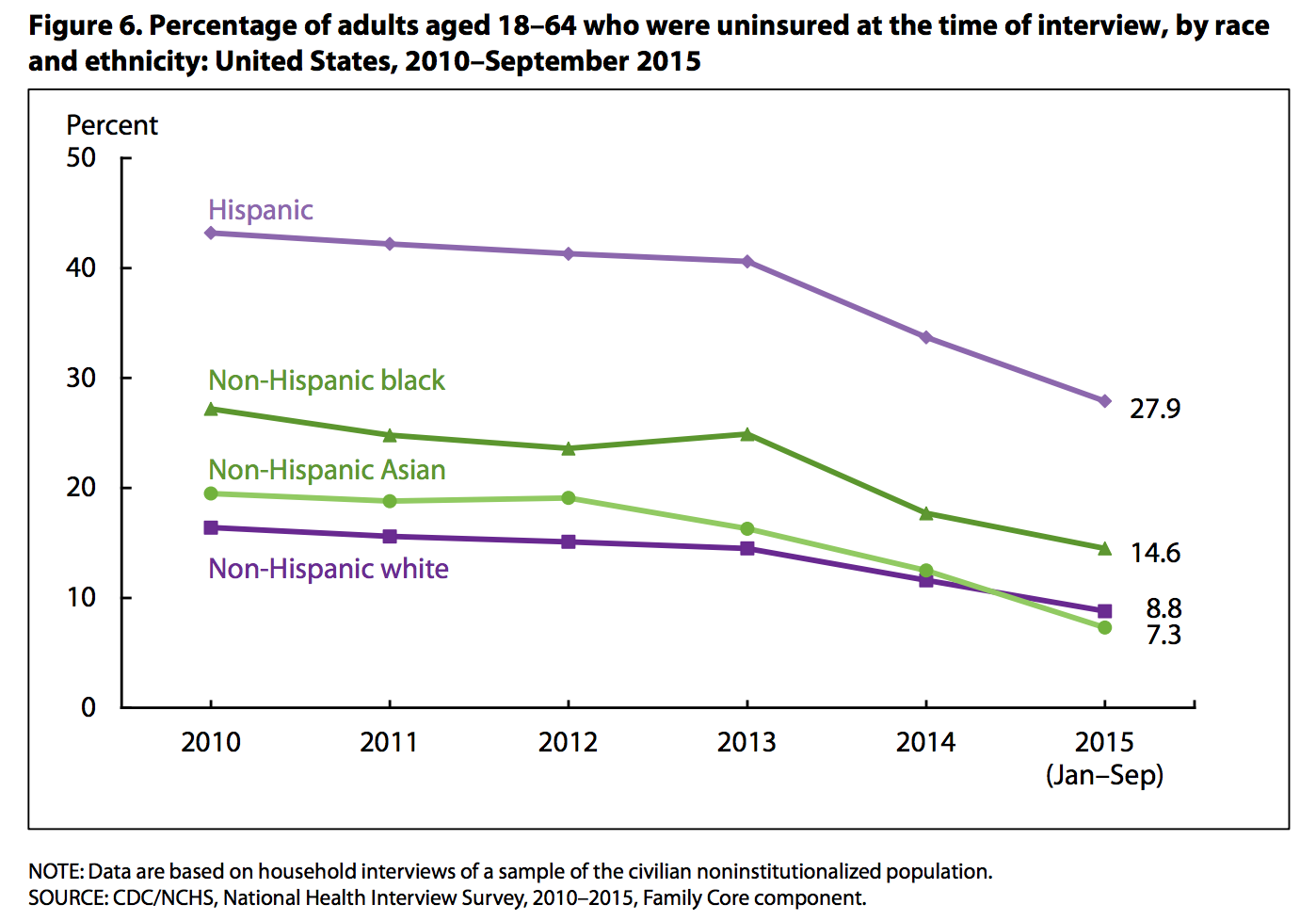Nearly two years after most of the provisions of the Affordable Care Act went into effect, the number of Americans who are uninsured continues to fall, according to a new government survey.
Between January and September 2015, about nine percent of Americans didn’t have health insurance, according to the National Center for Health Statistics. Previously, the same survey had found the percentage of uninsured Americans fell from 20 to 18 between 2013 and 2014. Other surveys have gathered roughly similar figures.
Looking at the number of Americans covered by health insurance is just one way to judge whether the ACA is working. Other considerations include: Whether Obamacare reduces health-care spending in the United States, whether it makes insurance cheaper for most people, and whether it makes Americans healthier as a whole. On these measures, the ACA’s track record is mixed. Because the new report is just about the newly insured, however, we’ll focus on that.
Here are the top three lessons to take away from the latest analysis:
- Since the passage of the ACA, uninsured rates fell most sharply for some of those Americans in the greatest need, including low-income folks and minorities. Black and Hispanic Americans remain the most likely to be uninsured, however. (Asian Americans’ insurance rates fell below whites’ in 2015.)
In addition, the number of poor American adults who don’t have health insurance remains high: more than one in four. Poor children fare better, with an uninsured rate of 4.4 percent, and a steep decline in uninsured rates between 2010 and 2015.


- States that invest in their own health insurance marketplaces—instead of relying on the federal government’s—cover more of their people.
- The effects of the ACA varied a lot between states. The act was originally designed to work alongside an expansion of Medicaid to cover more low-income Americans, but after a 2012 Supreme Court decision made expansion optional, 19 states have decided against it. In those states, about one in six people are uninsured, versus one in 10 in states that expanded Medicare, the report finds. That’s a problem: Adults in this so-called coverage gap tend to be working poor and “have limited, if any, option for affordable health coverage,” the Kaiser Family Foundation reports.
Overall, it looks like Obamacare is working to cover more Americans, including many of the neediest. Still, gaps remain, especially in those states that are resisting the act the most.

Quick Studies is an award-winning series that sheds light on new research and discoveries that change the way we look at the world.





